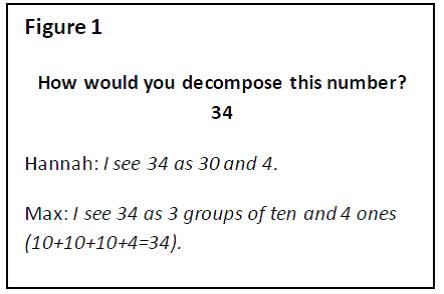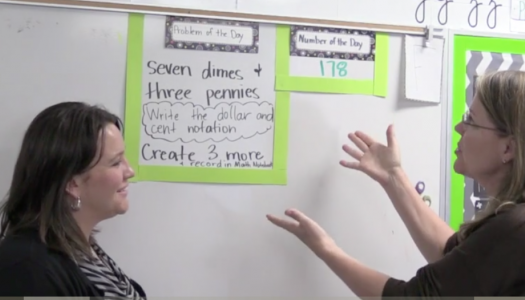Meaningful Mental Math
Join Our Community
Access this resource now. Get up to three resources every month for free.
Choose from thousands of articles, lessons, guides, videos, and printables.
Last week I stopped at a convenience store to pick up my daily dose of caffeine. The total was $1.81, so I handed the cashier a five-dollar bill and—wait for it—one penny. The clerk looked at me sheepishly and said, “Sorry, I'm not very good at doing math in my head." This reinforced my belief that mental math is a critical component of math instruction and should be done on a regular basis. Students need regular opportunities to work with numbers without using paper and pencil.
What exactly is mental math? Put simply, mental math is solving math problems without the use of paper and pencil. During a mental math exercise, students are shown a problem and given time to solve it mentally. The teacher does not model, and students are not required to use a specific strategy. They solve the problem in a way that makes sense to them. Once students are given time to solve, various solution strategies are recorded as they articulate their thinking. The teacher facilitates, extending or clarifying student thinking with questions, scripting, or allowing students to record their thinking on chart paper. It is not necessary to have each student share his or her answer; however, you do want students to see several different ways that the problem was solved.
 Middle school math teachers say over and over that their students lack an understanding of number sense. Research shows that without a strong foundation of number sense, students have a difficult time learning more advanced mathematics (Seeley, 2005). When students regularly work with numbers during mental math, they will begin to develop flexibility, “the ability to use number relationships with ease in computation” (Parrish, 2011). For example, students begin to recognize that 23 can be seen in different ways: as one group of 23, two groups of ten and three ones, 10+10+3, and so on. Mental math helps students recognize that math is actually a series of patterns and that there are multiple ways to attack a problem, not just the traditional algorithm.
Middle school math teachers say over and over that their students lack an understanding of number sense. Research shows that without a strong foundation of number sense, students have a difficult time learning more advanced mathematics (Seeley, 2005). When students regularly work with numbers during mental math, they will begin to develop flexibility, “the ability to use number relationships with ease in computation” (Parrish, 2011). For example, students begin to recognize that 23 can be seen in different ways: as one group of 23, two groups of ten and three ones, 10+10+3, and so on. Mental math helps students recognize that math is actually a series of patterns and that there are multiple ways to attack a problem, not just the traditional algorithm.
When I first began implementing mental math, my approach was similar to building reading stamina with students: I started small. At first, we did mental math two times per week, and I chose mental math skills that I knew my students would be successful with (see Figure 1). I wanted them to feel successful and to build their confidence. As students became more comfortable with mental math, we gradually worked up to implementing it every day during our math block. I began to introduce more rigorous math problems, and I aligned the daily mental math to the skill or concept that was being taught. Over time, mental math became very enjoyable for my students and for me as well.
In my classroom, mental math is the stage where students begin to take ownership for their learning, develop confidence in their abilities, justify and explain their thinking, and truly make sense of mathematics. At the same time, mental math helps me see what strategies work well for students, what misconceptions need to be clarified, and how I can enrich and extend my students' thinking.
References
Parrish, S. (2011). Number Talks Build Numerical Reasoning. Teaching Children Mathematics, 198–205.
Seeley, C. (2005). Do the Math in Your Head! NCTM News Bulletin.







